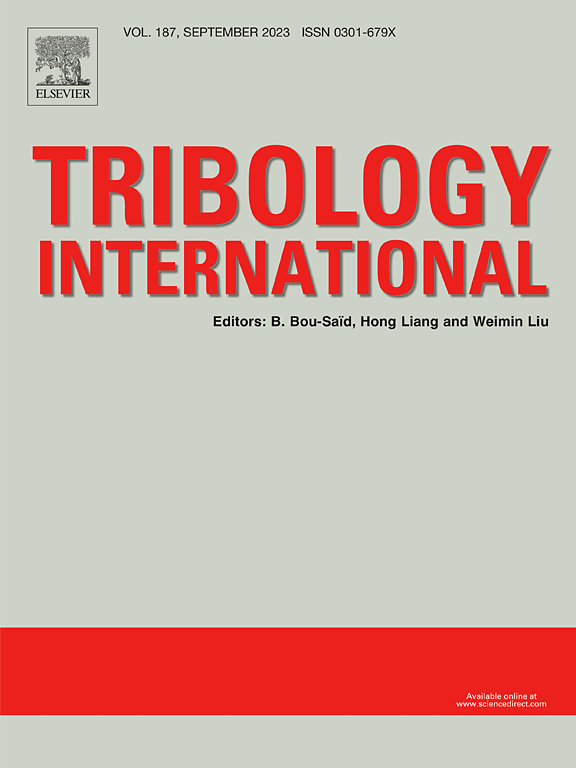超声表面轧制工艺诱导纳米梯度结构对40CrNiMoA钢微动磨损氧化的影响机理
IF 6.1
1区 工程技术
Q1 ENGINEERING, MECHANICAL
引用次数: 0
摘要
在合金钢微动磨损过程中,表面原位形成的润滑氧化层对其耐磨性有显著影响。超声表面滚压处理(USRP)可以在40CrNiMoA钢表面形成纳米梯度结构,该结构在微动磨损过程中表现出独特的摩擦氧化行为。然而,潜在的监管机制仍不清楚。为了解决这一问题,本研究通过USRP制备了纳米梯度结构,并通过微动磨损测试系统地研究了摩擦行为、微观结构演变和摩擦氧化之间的相互作用。研究阐明了纳米梯度结构通过晶粒细化和位错扩散的协同作用调控摩擦氧化、提高耐磨性的微观机制。结果表明:纳米梯度结构增强了材料的抗剪切性能,促进了均匀稳定的氧化层的快速形成(微动磨损30 s后氧化层已经形成,氧化层厚度比基体厚169 nm)。同时,纳米晶体的粗化可以有效抑制表面微观结构的持续氧化,防止氧化物的形成,从而避免脆性破坏,使氧化层保持在纳米级厚度。本文章由计算机程序翻译,如有差异,请以英文原文为准。
The influence mechanism of nanogradient structures induced by ultrasonic surface rolling process on fretting wear oxidation of 40CrNiMoA steel
In the fretting wear process of alloy steel, the in-situ formation of lubricative oxide layers on the surface significantly influences wear resistance. Ultrasonic surface rolling processing (USRP) can fabricate a nanogradient structure on the surface of 40CrNiMoA steel, which exhibits unique tribo-oxidation behavior during fretting wear. However, the underlying regulatory mechanism remains unclear. To address this, this study prepared a nanogradient structure via USRP and systematically investigated the interplay between frictional behaviour, microstructural evolution and tribo-oxidation through fretting wear tests. The study elucidates the micro-mechanism by which the nano-gradient structure regulates tribological oxidation and enhances wear resistance through the synergistic effects of grain refinement and dislocation proliferation. The results demonstrate that the nanogradient structure enhances the material's shear resistance and promotes the rapid formation of a uniform and stable oxide layer (The oxide layer had already formed after 30 s of fretting wear, with an oxide layer thickness that was 169 nm thicker than the substrate.). Meanwhile, the coarsening of nanocrystals can effectively suppress the persistent oxidation of the surface microstructure, preventing the formation of oxides and thereby avoiding brittle failure, maintaining the oxide layer at a nanoscale thickness.
求助全文
通过发布文献求助,成功后即可免费获取论文全文。
去求助
来源期刊

Tribology International
工程技术-工程:机械
CiteScore
10.10
自引率
16.10%
发文量
627
审稿时长
35 days
期刊介绍:
Tribology is the science of rubbing surfaces and contributes to every facet of our everyday life, from live cell friction to engine lubrication and seismology. As such tribology is truly multidisciplinary and this extraordinary breadth of scientific interest is reflected in the scope of Tribology International.
Tribology International seeks to publish original research papers of the highest scientific quality to provide an archival resource for scientists from all backgrounds. Written contributions are invited reporting experimental and modelling studies both in established areas of tribology and emerging fields. Scientific topics include the physics or chemistry of tribo-surfaces, bio-tribology, surface engineering and materials, contact mechanics, nano-tribology, lubricants and hydrodynamic lubrication.
 求助内容:
求助内容: 应助结果提醒方式:
应助结果提醒方式:


